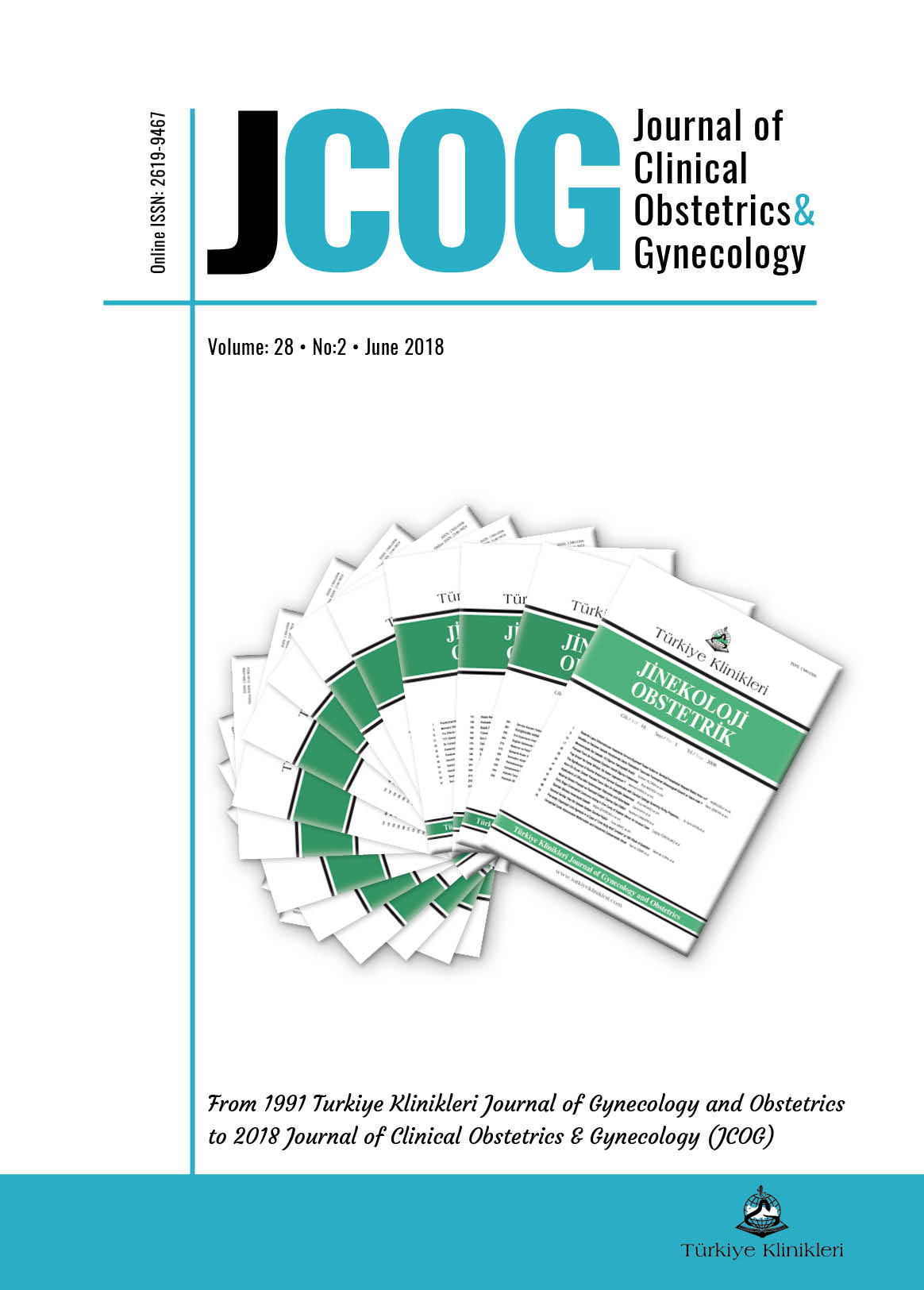Open Access
Peer Reviewed
ORIGINAL RESEARCH
2769 Viewed1377 Downloaded
Discussion on Provincial Evaluation Results of Maternal Mortality in Terms of Preventability: Commission Decision Differences in Konya
J Clin Obstet Gynecol. 2018;28(2):35-43
DOI: 10.5336/jcog.2017-58388
Article Language: EN
Article Language: EN
Copyright Ⓒ 2025 by Türkiye Klinikleri. This is an open access article under the CC BY-NC-ND license (http://creativecommons.org/licenses/by-nc-nd/4.0/)
ABSTRACT
Objective: The objective of this study was to investigate the risk factors of maternal mortality in Konya province, as well as the preventability of deaths in cases where the central and local commissions differed in their decisions. Material and Methods:Maternal mortality between 2009 and 2014 in the Konya province was screened for the cases, where the central and local Maternal Mortality Investigation Commissions gave different decisions. These differences pertain to whether the deaths were ''preventable'' or ''not-preventable'', differences in the first, second and third delay models, and indirect, direct and incidental deaths. The data were evaluated electronically along with a descriptive statistical analysis, differences in the decisions and compliance in the mortality rates were evaluated. Results: The median age of the deceased mothers was 28 (21-44) years and 83.3% of the mothers had at least one mortality risk factor. While the overall maternal mortality rate was 36.7% within the first 48 h after birth, the rates were highest within the first 48 h after birth (26.7%) and between the 1st and 42nd day after birth (26.7%) in indifferently assessed cases. The cause in 30% of all deaths and 33.3% of deaths with differential assessments was postpartum hemorrhage, as per the results of central Maternal Mortality Investigation Commissions. The decisions of the central and local commissions differed in terms of preventability, delay models or death classification in 50% of the deaths. Taken together, the compliance between central and local decisions was not precise in investigating maternal mortality. Conclusion: The first 48 h after birth and the postpartum period are particularly critical. The causes of death, particularly postpartum hemorrhage, should be thoroughly investigated. We recommend periodic re-evaluations of cases where different decisions were made, in order to lower the rate of preventable maternal mortality.
Objective: The objective of this study was to investigate the risk factors of maternal mortality in Konya province, as well as the preventability of deaths in cases where the central and local commissions differed in their decisions. Material and Methods:Maternal mortality between 2009 and 2014 in the Konya province was screened for the cases, where the central and local Maternal Mortality Investigation Commissions gave different decisions. These differences pertain to whether the deaths were ''preventable'' or ''not-preventable'', differences in the first, second and third delay models, and indirect, direct and incidental deaths. The data were evaluated electronically along with a descriptive statistical analysis, differences in the decisions and compliance in the mortality rates were evaluated. Results: The median age of the deceased mothers was 28 (21-44) years and 83.3% of the mothers had at least one mortality risk factor. While the overall maternal mortality rate was 36.7% within the first 48 h after birth, the rates were highest within the first 48 h after birth (26.7%) and between the 1st and 42nd day after birth (26.7%) in indifferently assessed cases. The cause in 30% of all deaths and 33.3% of deaths with differential assessments was postpartum hemorrhage, as per the results of central Maternal Mortality Investigation Commissions. The decisions of the central and local commissions differed in terms of preventability, delay models or death classification in 50% of the deaths. Taken together, the compliance between central and local decisions was not precise in investigating maternal mortality. Conclusion: The first 48 h after birth and the postpartum period are particularly critical. The causes of death, particularly postpartum hemorrhage, should be thoroughly investigated. We recommend periodic re-evaluations of cases where different decisions were made, in order to lower the rate of preventable maternal mortality.
MENU
POPULAR ARTICLES
MOST DOWNLOADED ARTICLES





This journal is licensed under a Creative Commons Attribution-NonCommercial-NoDerivatives 4.0 International License.










